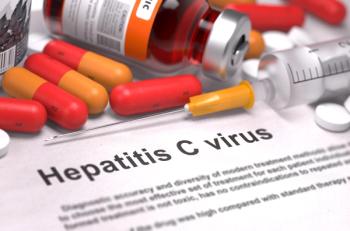
Expert Discusses Early Safety and Tolerability Findings for VMT-α-NET in Neuroendocrine Tumors | ESMO 2025
Oncologist Thor Halfdanarson reviews dose-finding data for the targeted α radioligand therapy [^212Pb]VMT- α-NET, highlighting manageable toxicity, stable renal function, and plans for phase 2 evaluation.
In an interview with Pharmacy Times, Mayo Clinic oncologist Thor Halfdanarson, MD, discussed the recently presented data from the phase 1/2 dose-finding study of VMT-α-NET ([^212Pb]VMT- α-NET), a targeted α-particle radioligand therapy developed by Perspective Therapeutics, Inc, which was accepted for presentation at the European Society for Medical Oncology (ESMO) Congress 2025. In this discussion, Halfdanarson reviews the safety and tolerability findings observed in the dose-escalation cohorts, as well as preliminary insights into pharmacokinetics and dose selection for the next development stage.
Q: Could you walk us through the key safety and tolerability findings from the dose-finding cohorts (1 and 2)? Were there any dose-limiting toxicities, and how manageable were they in this patient population?
Thor Halfdanarson, MD: Absolutely. So, in terms of the safety profile, there were relatively few grade 3 toxicities, and overall, the drug is very well tolerated. There were no new safety signals. Obviously, as always, we get concerned about kidney function and bone marrow involvement by the radioligand, but we didn’t really see any of that.
In terms of renal function, creatinine—the indicator of renal function—was stable in patients following treatment. There were no obvious kidney signals. Therefore, for kidney toxicity, same thing with the bone marrow and the blood counts—everything seemed to hold up really nicely.
So, nothing unexpected. As we’ve seen with other alpha particle therapies, there is more hair loss, but typically mild in patients undergoing latitude 12 alpha, VMT alpha NET, and it’s similar with other radioligand therapies testing alpha. There is a little bit of nausea, mostly mild, but in terms of other organ toxicities, not a whole lot.
Q: Do you have data on the pharmacokinetics, tumor uptake, normal organ distribution, and clearance of ^212Pb-VMT-α-NET? How consistent was tumor targeting across patients?
Halfdanarson: We have limited information on that yet. We did collect those data in a subset of the patients enrolled, but we haven’t looked at it in a systematic way yet, so we are not reporting that at ESMO. That’s definitely to be reported later.
What we do know is that a subset of the patients had tumors that did not uniformly light up on somatostatin receptor imaging and were included in the trial because the inclusion criteria didn’t require uniform expression—and they seemed to derive benefit as well. So, in terms of pharmacokinetics and more advanced dosimetry data, that’s yet to come.
Q: Based on the safety and preliminary efficacy, what is the recommended phase 2 dose (or dose expansion dose) you intend to move forward with? What factors drove that decision?
Halfdanarson: We are not yet at a point with the recommended phase 2 dose. We are up to 5 millicurie in the largest expansion cohort, and then there is one cohort above that with 6 millicurie, which I believe has eight patients on it. We have not yet reported in full in terms of efficacy and toxicity. So, I would suspect that it falls somewhere between five and six, depending on what the third and highest dose cohort shows.
Newsletter
Stay informed on drug updates, treatment guidelines, and pharmacy practice trends—subscribe to Pharmacy Times for weekly clinical insights.




















































































































































































































